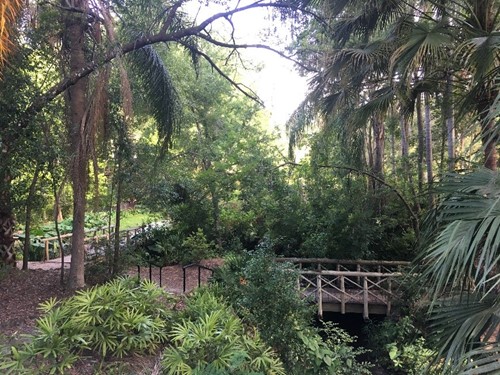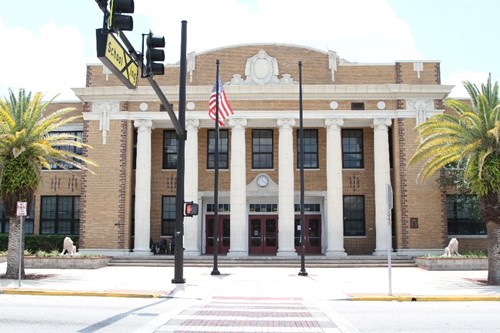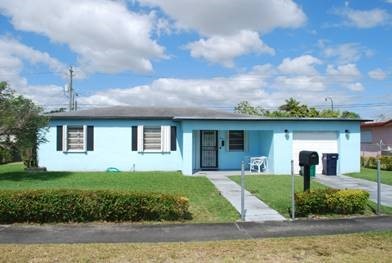
For Immediate Release
Thursday, June 13, 2019
Contact: Sarah Revell
850-245-6522
[email protected]
Secretary Lee Announces the Designation of Two Historic Districts on the National Register of Historic Places
Tallahassee –
Secretary of State Laurel M. Lee announced today that the Lake Lawsona Historic District in Orlando and the Richmond Heights Pioneer Historic District in Miami-Dade County have been listed on the National Park Service’s National Register of Historic Places.
“Historic districts convey a special sense of place and identity,” said Secretary Lee. “Lake Lawsona and Richmond Heights contain collections of historically and architecturally significant buildings with well-defined and meaningful identities.”
The Lake Lawsona Historic District in Orange County is a mixed-use district with both residential and commercial properties dating back to the 19th century. Built around Lake Lawsona, just east of Orlando’s historic core, the district was first incorporated into Orlando in 1887 and was primarily residential at that time. The district’s population greatly expanded during the Florida Land Boom of the 1920s when many developers acquired large valuable tracts of land intended to be sold for conversion into new communities. One of the primary early developers of the Lake Lawsona Historic District was Walter Washington Rose, who actively planned the area and tried to preserve some of its natural beauty.

The Lake Lawsona District contains more than 500 buildings, primarily built between the 1920s and 1940s. The neighborhood contains multiple brick-paved streets, many of which are lined with Spanish moss-laden live oaks. Architectural styles represented in the district include Bungalow, Colonial Revival, Craftsman, Dutch Colonial Revival, Mediterranean Revival, Minimal Traditional, Mission Revival, Neoclassical Revival and Tudor Revival.
The district also contains several properties that were previously listed on the National Register for their individual historical significance. H.H. Dickson Azalea Park, located within the district, was purchased in 1916 by State Senator Walter Rose and designated as park land. It took 20 years for the City of Orlando to realize that goal, with the collaboration of the New Deal-era Works Progress Administration and local landscape architect Mulford Foster. The park has two distinct levels with tree shaded open park space on the upper levels and more intimate areas down at the level of the creek. Multiple winding stairs lead down into the ravine which is unusual in the otherwise flat landscape. Today, the park retains its historic appearance and serves as a publically accessible oasis in downtown Orlando where visitors come daily to enjoy the peaceful tranquility, running water, lush vegetation and wildlife of the park. It is often the site of picnics, hikes, weddings and engagement pictures.

The district also contains the old Orlando High School, which was built in 1926. The building served as the only high school for white students in Orlando for its first 25 years. Famous graduates of Orlando High School include actor Buddy Ebsen, Nobel Prize recipient Marshall W. Nirenberg and astronaut John Young. Almost a century after its opening, the school continues to be a local leader in the field of education as a magnet school for The Academy for the Visual and Performing Arts. The design of the main building incorporates both Greek Revival and Neoclassical Revival characteristics. Its most recognizable feature is the six massive ionic columns which frame the main entrance.

The Lake Lawsona Historic District was locally designated by the City of Orlando in 1994, and the boundaries set by the National Register nomination match the local historic district boundaries.
The Richmond Heights Pioneer Historic District, located in southwestern Miami-Dade County, is made up of the first 26 houses built in the Richmond Heights subdivision between 1949-1950. The first of its kind in South Florida, Richmond Heights was a planned community built exclusively for African American veterans of World War II. All 26 houses were built during a period when Miami-Dade County was rapidly growing in size and population. Captain Frank Crawford Martin, a former West Point student and pilot for Pan American Airlines, purchased 3,000 acres of rural land and recognized a market for professional African American veterans during the period of post-war expansion. He presided over the initial planning of the entire Richmond Heights community, setting aside land for the future development of churches, a school, a medical clinic and a playground. The houses in the Richmond Heights Pioneer Historic were each sold in December 1949, and all are still standing and in good condition.

The 26 pioneer families made a significant impact on the Richmond Heights community, attracting other residents to the new development. Each of the residents were veterans and honorably discharged servicemen who continued with noted professional and personal service. The first to buy a home in Richmond Heights was Luther H. Wallace, a Georgia native and member of the Coast Guard, who was serving in active duty when he and his wife purchased their home. Descendants of some of the original families still live in the original houses today.

Captain Martin’s development plan for Richmond Heights had a very specific and intentional design scheme, one that aimed to ensure that the neighborhood was organized and attractive to potential buyers. Each property has a lot measuring 75x100 feet and the concrete block homes were built primarily with three bedrooms, though a few were constructed with two bedrooms. These single-family homes are relatively modest, concrete block residences with limited architectural detailing. The homes have plain stucco façades, with a few individual homes displaying additional decorative detailing in the stucco. Each of the houses within the district has maintained historical integrity and a connection to its original design and appearance.
# # #
About the National Register of Historic Places
The National Register of Historic Places is a list maintained by the National Park Service which includes historical or archaeological properties including buildings, structures, sites, objects, and districts, that are considered worthy of preservation because of their local, statewide and/or national significance. Nominations for properties in Florida are submitted to the National Park Service through the Florida Department of State’s Division of Historical Resources. Florida has over 1,700 listings on the National Register, including 295 historic districts and 175 archaeological sites. There are more than 50,000 sites contributing to the National Register in Florida. For more information, visit flheritage.com/preservation/national-register. For more information about the National Register of Historic Places program administered by the National Park Service, visit nps.gov/nr.
About the Florida Department of State’s Bureau of Historic Preservation The Bureau of Historic Preservation (BHP) conducts historic preservation programs aimed at identifying, evaluating, preserving and interpreting the historic and cultural resources of the state. The Bureau manages the Florida Main Street Program, and under federal and state laws, oversees the National Register of Historic Places program for Florida, maintains an inventory of the state's historical resources in the Florida Master Site File, assists applicants in federal tax benefit and local government ad valorem tax relief programs for historic buildings, and reviews the impact that development projects may have on significant historic resources. For more information, visit flheritage.com/preservation.
